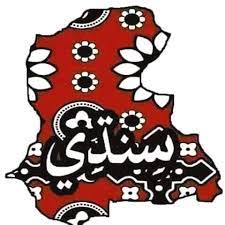
As is the case with many communities, Sindhi Hindus too feel the need for a community history.
By Nandita Bhavnani
[When India was partitioned in 1947, the province of Sindh went in its entirety to the newly-formed state of Pakistan. The bulk of the Hindus (and Sikhs) of Sindh migrated to India in the months that followed. Given that there was no part of Sindh in India, and given the harsh visa regime shared by the two countries, Sindhi Hindus have had little or no contact with their original homeland for the last seven decades. Some among the generations of Sindhi Hindus that migrated to India (and subsequently formed the diaspora) have shared their recollections with their children and grandchildren. There has been a corresponding move among a section of Sindhi Hindus to distance themselves from memories of a culture shared with Muslims, and a history that was largely dominated by Muslims. Yet, as is the case with many communities, Sindhi Hindus too feel the need for a community history. Consequently, when Sindhis recall Sindh, they often refer to a ‘sanitized’ Sindh, which they have supposedly ‘inherited’]
Jiye munhinji Sind – Long live my Sindh
Maan ta ghoriyaan penhinji jind- I would gladly give my life
Penhinje abaarne vatan taan! – For my ancestral land!
Abaarne vatan taan – For my ancestral land,
Sindh je chaman taan – For the garden that is Sindh
Jiye munhinji Sindh… Long live my Sindh…
Kiyan visaryaan Sindh ja nazaara- How can I forget the sights of Sindh
Sadhbele Manorhe vaara – Those of Sadhbela and Manora1
Chand jyun raatyun ain behraarna- New moon nights and ritual offerings to the river god
Lal ja panjda gayindar muhaarna – Muhanas singing praises of [Jhule] Lal Jiye munhinji Sindh… Long live my Sindh…
Sufiyan santan ji aahe Sindhri- My beloved Sindh is [the land] of Sufi saints
Mast faqiran ji aahe Sindhri – My beloved Sindh is [the land] of ascetics lost in a trance
Shah Sachal Sami-a jo dero – The home of Shah, Sachal and Sami
Shaal vanya ute aaun hik bhero – May I go there once again
Jiye munhinji Sindh… Long live my Sindh…
Mohan jo daro jehinji nishaani- Its symbol is Mohan jo daro
Jeko na samjhe kare tho naadaani – Whoever doesn’t understand this, errs
Jeko bi Sindh visaararn chaahe- Whoever wants to forget Sindh
Sacho sapoot so Sindh jo naahe- Is not a true son of Sindh
Jiye munhinji Sindh… Long live my Sindh…
Marui-a vaaangur piyo baadaayaan- I lament like Marui
Ajhaa abaarna shaal vasaayaan- May I settle down again
Jhularn Asha kando hia poori – Jhulan will fulfil this hope of mine8
Jhumariyun payindas umar samoori- I will dance [his praises] all my life
Jiye munhinji Sindh… Long live my Sindh…
The Context for the Song
This Sindhi song was written by the late Sindhi film director, actor and writer, Dharam Kumar Tolani (1919-1993),whose pen name was ‘Deepak Asha’. Its intended audience was probably Sindhi Hindus in India or in the diaspora, who had migrated from Sindh after the Partition of India in 1947. The song seeks to not only memorialize, but also celebrate, Sindh, the poet’s ‘ancestral land’.
After the Partition of India in 1947, when Sindh became a part of Pakistan, the bulk of its minorities chose to migrate to India. While it is not possible to arrive at the exact number of the Hindus and Sikhs who migrated from Sindh in 1947-48, it has been estimated at approximately 1 million people.
In India, these Sindhi Hindus were scattered mostly across western India. During the colonial period, some Sindhi Hindu traders and merchants were living abroad for business purposes, and in the years after Partition, this diaspora not only became cemented, but also grew exponentially, both in numbers as well as in distribution.
In the early years after Partition, Sindhi Congress leaders, such as Dr. Choithram Gidwani and Jairamdas Doulatram, had strongly advocated that Sindhi Hindu refugees should learn local languages and adapt to local cultures and assimilate in local populations, wherever they resettled. This was bolstered by the then-prevalent Nehruvian ideology of Indian citizens rising above their ethnic affiliations and religions to unite as ‘Indians’.
However, there were also some Sindhis like the professor, writer and community leader, Ram Panjwani, Deepak Asha and others, who battled these trends to dilute Sindhi identity by exhorting Sindhis to keep their language and cultural identity alive. According to the writer Bhagwan Bhagchandani, ‘Deepak Asha’ (like Ram Panjwani) toured Sindhi Hindu refugee camps and resettlement colonies in those early years after Partition. They entertained Sindhi Hindus with music, while encouraging them not to forget their Sindhi culture and identity. It is likely that this song was written during this early period of resettlement, and with such a purpose.
While Deepak Asha’s hopes for a robust sense of ethnic identity among Sindhis in India may have had limited success, his song became highly popular at Sindhi gatherings. Over the intervening decades, it has been sung or played at numerous Sindhi events. However, it is a highly selective representation of, or ‘remembering’ of, Sindh.
The song portrays a somewhat ‘Hindu-ized’ Sindh. It refers to only Hindu places of worship, such as Sadhbelo and Manora, and also the ritual offering of the bahraana on days of the new moon. What is interesting is that although Sindh had a predominantly Muslim population and history, these have been largely ignored in the song. Muslims formed a majority of 76% of Sindh’s population according to the 1941 census. Further, Sindh had been under continuous Muslim rule for roughly eleven centuries, from the invasion of Muhammad bin Qasim in 711-713 CE until the British conquest in 1843. Consequently, most of the antique architectural remains found in Sindh are Muslim in style and origin. Traditionally, Sindhi handicrafts and textiles have also been produced mostly by Muslim artisans. However, the song clearly underplays the considerable Muslim presence in Sindh. It mentions Sindhi Muslims in a highly selective manner, and highlights only those elements of Sindhi history and culture that Hindus can easily identify with. The song refers to Muhanas, the marginalized Sindhi Muslim community of fishermen and ferrymen, but only in the context of their singing praises of Jhule Lal, the god of the river Indus. It also refers to Marui, the Muslim heroine of a Sindhi legend, famous for her loyalty to her homeland while in forced exile (here Marui is invoked as an ideal or as an allegory, for those Sindhi Hindus who still yearn for their homeland.) The only other Sindhi Muslims mentioned in the song are the famous Sufi poet-saints, Shah Abdul Latif Bhitai (1689-1752) and Sachal Sarmast (1739-1829). Finally the poet invokes Moenjodaro as the ultimate symbol of Sindh.
The poet also makes two ironic claims. Firstly, he asserts that anyone who wants to forget Sindh is not a true son of Sindh, despite himself disregarding the not-inconsiderable Muslim aspects of Sindh in this very song. And secondly, he repeatedly claims that he would gladly give his life for Sindh, but actually the opposite appears to be true, since he himself migrated to India. Using this song as a springboard, this essay proposes to delineate motifs that recur in this selective ‘remembering’ of Sindhi history. It further examines possible causal factors in pre-1947 Sindhi society as well as post-Partition developments that possibly contributed to this reconstruction of Sindhi history. (Continues)
_______________________
A research paper ‘Remembering Sindh, Reconstructing Sindh’ – The Politics of Memory among Sindhi Hindus in India’ by Nandita Bhavnani author in 2017.
 Nandita Bhavnani, an independent scholar, who was raised as a typical south Mumbai elitist kid and couldn’t read, write or fluently speak in her mother tongue, became a Sindhi historian by choice. She learnt the Persian script and worked with social anthropologist Ashis Nandy for research on “Partition Psychosis”. She has travelled many times to Pakistan to explore Sindhi culture there and her research from both sides of the border has been documented in books and articles.
Nandita Bhavnani, an independent scholar, who was raised as a typical south Mumbai elitist kid and couldn’t read, write or fluently speak in her mother tongue, became a Sindhi historian by choice. She learnt the Persian script and worked with social anthropologist Ashis Nandy for research on “Partition Psychosis”. She has travelled many times to Pakistan to explore Sindhi culture there and her research from both sides of the border has been documented in books and articles.